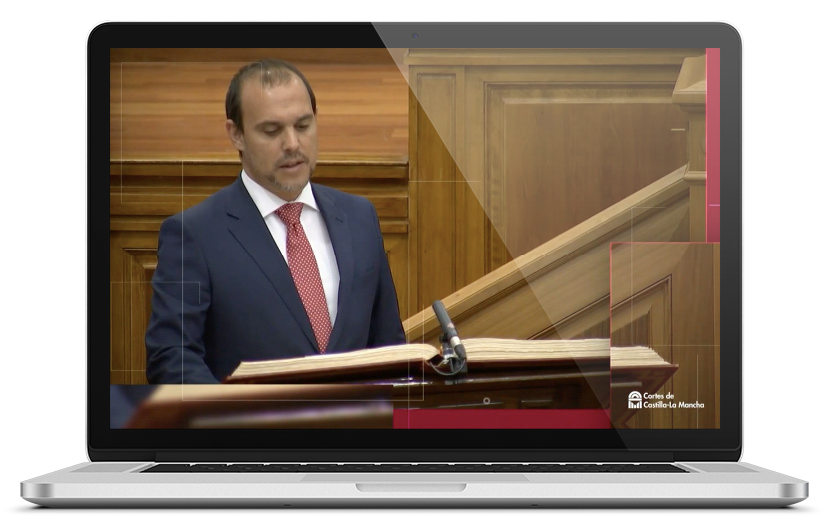Branded content, also known as content marketing, is a strategy that involves creating relevant and valuable content by a brand to attract, engage, and retain its audience. Unlike traditional advertising, which focuses on the direct promotion of products or services, branded content emphasizes storytelling and providing experiences that emotionally resonate with the audience, fostering a deeper and longer-lasting connection between the brand and the consumer.
Branded content can take various forms, such as articles, videos, podcasts, and infographics, among others. The key is that the content must be authentic, entertaining, and aligned with the brand’s values and identity, without appearing as an explicit advertisement. This approach allows brands and organizations to stand out in an advertising-saturated environment, where consumers tend to ignore or block traditional ads.
Importance of branded content
Branded content has gained significant importance in companies’ marketing strategies for several reasons:
1. Generation of engagement
Well-designed branded content can capture the public’s attention and keep it interested for longer. By telling relevant and meaningful stories, brands can generate greater engagement, which in turn can lead to higher consumer loyalty and trust.
2. Differentiation from competitors
In a saturated market, branded content offers an effective way to stand out from the competition. Brands that offer unique and valuable content can more easily distinguish themselves and create a strong, recognizable identity.
3. Brand image building
Branded content allows brands to build and strengthen their image and reputation. Through stories and experiences aligned with their values, brands can communicate their purpose and personality, creating an emotional connection with their audience.

4. Increased visibility and reach
Branded content has the potential to be widely shared through social media and other digital channels, significantly extending its reach. Valuable and entertaining content is more likely to be shared by users, which can organically increase the brand’s visibility.
5. Consumer education
Branded content can be an effective tool for educating consumers about the brand’s products, services, or industry. Providing useful and relevant information can help consumers make informed decisions, further strengthening their relationship with the brand.
Types of branded content
Branded content can take various formats, each with its own characteristics and advantages. Here are some of the most common types:
1. Articles and blogs
Articles and blogs are a popular form of branded content. They allow brands and organizations to explore topics of interest to their audience, offer useful advice, share inspiring stories, or provide relevant industry information. Blogs also improve the brand’s SEO, which can increase organic traffic to their website.
2. Videos
Videos are one of the most effective forms of branded content due to their ability to tell stories visually and emotionally. From short films and documentaries to tutorials and product presentations, videos can quickly capture attention and be shared on platforms like YouTube, Instagram, and TikTok.
3. Podcasts
Podcasts have gained popularity as a form of branded content due to their accessible format. They allow brands to delve into specific topics, interview experts, and share stories conversationally. Podcasts are especially effective for audiences seeking educational or entertaining content to listen to while performing other activities.

4. Infographics
Infographics are a visual tool that allows brands to present complex information clearly and attractively. They are ideal for sharing data, statistics, and processes in an easy-to-understand and memorable way. Infographics are highly shareable on social media and can increase engagement.
5. Live events and webinars
Live events and webinars offer a unique opportunity to interact directly with the audience. Brands can organize seminars, workshops, product launches, and presentations. These events not only provide real-time value but also allow brands to capture immediate feedback from their audience.
6. Social media
Branded content on social media encompasses a wide range of formats, including posts, stories, live broadcasts, and more. Social media allows brands to interact directly and frequently with their audience, creating a closer and more dynamic relationship.
7. Content series
Content series, whether videos, blogs, or podcasts, allow brands to maintain the public’s interest over time with regular episodes. This not only increases engagement but also fosters a loyal audience eagerly awaiting the next episode.
8. E-books and whitepapers
E-books and whitepapers are more extensive and detailed forms of branded content, allowing brands to explore topics in depth. They are ideal for educating the audience about technical or complex aspects of the industry and can position the brand as a thought leader in its field.
Challenges and considerations in creating branded content
Although branded content offers numerous advantages, it also presents certain challenges that brands must consider to ensure the success of their campaigns. Here are some of the main challenges and considerations:
- Authenticity
One of the biggest challenges in creating branded content is maintaining authenticity. Today’s consumers are extremely perceptive and can quickly detect when a brand is trying to sell something insincerely. To avoid this, it’s crucial that the content created aligns with the brand’s values and identity and that the stories told are genuine and relevant to the audience.
- Balance between entertainment and promotion
Finding the right balance between entertainment and promotion is another significant challenge. Branded content must be engaging and entertaining enough to capture the public’s attention, but it also needs to meet the brand’s business objectives. Achieving this balance requires careful planning and a deep understanding of the audience.
- Measuring ROI
Measuring the return on investment (ROI) of branded content can be complicated. Unlike traditional advertising campaigns, where metrics like clicks and conversions are easier to track, branded content often focuses on long-term goals like brand building and consumer engagement. Brands need to develop effective methods for measuring the impact of their branded content campaigns, using metrics such as viewing time, social media interactions, and brand perception surveys.

- Producing high-quality content
Producing high-quality content that connects with the audience can be costly and time-consuming. Brands must be willing to invest in creative talent, technology, and resources to create standout content. This includes working with content creators, designers, writers, and video experts who can bring their skills and knowledge to produce exceptional content.
- Effective content distribution
It’s not enough to create high-quality content; it’s also essential to ensure it reaches the right audience. Brands need to develop effective distribution strategies that include using social media, collaborations with influencers, and email marketing campaigns, among others. Additionally, they must be prepared to adjust their distribution strategies based on performance and feedback received.
- Adaptability and flexibility
The digital environment is constantly evolving, and what works today may not be effective tomorrow. Brands and organizations need to be adaptable and flexible, willing to experiment with new formats and platforms to stay relevant. This also involves being attentive to emerging trends and consumer behavior and adjusting content accordingly.
- Regulatory and ethical compliance
Brands must ensure their content complies with all legal and ethical standards. This includes transparency in relationships with sponsors and collaborators, the accuracy of the information provided, and respect for consumer privacy and rights. Failure to comply with these standards can severely damage the brand’s reputation and result in legal penalties.
Conclusion
Branded content is a powerful strategy that goes beyond direct promotion of products and services, focusing on creating an emotional and lasting connection with the audience. Through various types such as articles, videos, podcasts, and live events, brands and organizations can tell authentic and valuable stories that resonate with their target audience.
In an advertising-saturated environment, branded content offers an effective way to differentiate, build brand image, and generate engagement, becoming an essential tool in marketing strategy. By investing in branded content, brands can create memorable experiences and establish meaningful relationships with their audience, achieving exceptional and long-lasting results that benefit both the company and its consumers.
However, brands must be aware of the challenges involved in creating branded content and be prepared to overcome them by considering the mentioned aspects. With careful planning and effective execution, branded content can not only attract and retain consumers but also foster long-term loyalty, boost brand visibility, and ultimately contribute significantly to sustainable business growth.
And this concludes the article on branded content. If you want to learn more about this topic, particularly focused on audiovisual content, and/or get to know our Video Engagement platform, don’t hesitate to contact us through this form.













